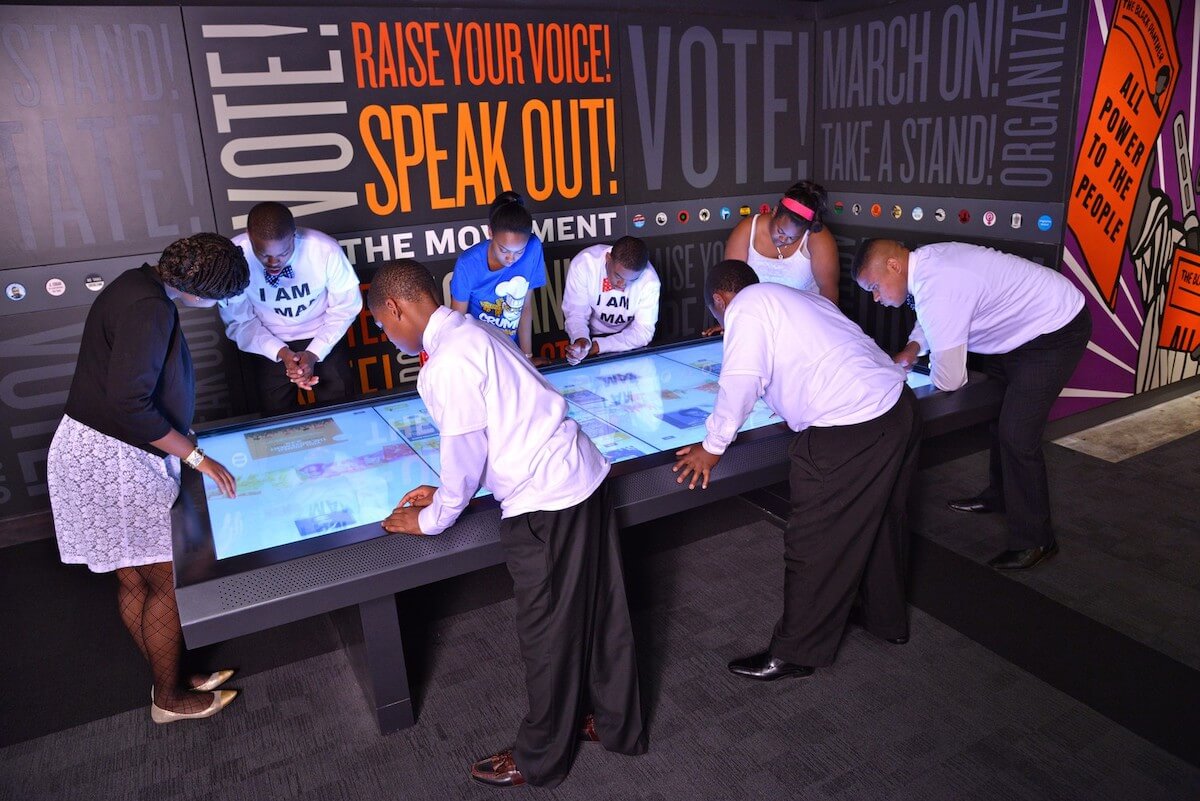
You Are Wrong if You Think Your Museum is Too Small to Wow
It’s easy to get drawn in by all the elaborate exhibits that the largest museums (admitted blessed with deep pocket donors) unveil. After all, they embrace the challenge of creating immersive experiences. The type of experience that truly deliver that rollercoaster wow. And in many instances, there is a hefty price tag attached.
This doesn’t need to be the case. Regardless of a museum’s size or budget, opportunities exist to deliver a memorable experience.
It’s true that today’s guest is interested in engaging exhibits, exhibits that either wow them or challenge them in some new way. Understandably, technology often plays a key role in creating these environments. Yet, the best solutions do not need to be the most expensive options. There are both creative and cost-effective ways to use technology.
Consider a Centerpiece
When investing in technology, the key to success is to be strategic in selecting technology that represents the biggest opportunity to immerse the guest and provide an experience.
For instance, when properly positioned within your museum, a video tower using interactive displays, an interactive table that changes content depending on what your guest selects or the eye-catching use of projection mapping each represent opportunities to make a noticeable splash.

Video towers and interactive displays encourage guests to interact and engage with your exhibit. Whereas projection mapping encourages a patron to stop, take in the images and listen to the accompanying sounds.
Leverage Smart Devices
It might surprise you how cost effectively you can make use of a guest’s smart device to create engagement. App development is not as expensive as you may think, and by encouraging guests to use their phones you are opening up the door to future engagements as well as the opportunity to customize experiences based off preferences you learn through data a guest shares with you.

Consider, for instance, within a history museum using the app to strategically assign a character to your patron at the beginning of the visit. As the visit progresses, the app can use geolocation to update the patron on what was happening to their character at each stage of the historical journey. Taking this approach helps establish a level of buy-in that is otherwise difficult to accomplish with passive exhibits.
Create New Realities
Leveraging virtual or augmented reality could add a new dimension to a pivotal exhibit that possibly needs new life. Augmented reality (AR) is an interactive experience of a real-world environment where the objects that reside in the real-world are enhanced by computer-generated perceptual information, sometimes across multiple senses. Once the technology is in place, periodic content changes can help keep these immersive exhibits engaging, especially for returning patrons.
At one point both technologies were extremely expensive. However, AR/VR have both matured significantly in recent years. And with maturity, the price of the associated technologies has dropped as well.
Seeing Your Space as Your Canvas
In some instances, space constraints can present limitations. However, with the right designs even tight spaces can still offer intriguing opportunities to wow the guest. The key here is to work with experienced professionals who understand design principles and best practices. Armed with the right plans, it is possible to integrate far more than you may have imagined.
An example of how technology can help. In a narrow space, even a small yet interactive video wall can serve as an ever-changing canvas for your museum to tell an engaging story. The long-term benefit of a video wall is the ability to change content according to your audience.
Interested in learning more about how you can use creativity and the strategic use of technology to capture the attention of the new patron. With 55+ years of helping attractions wow their guests, Electrosonic has the experience and expertise to help you succeed.
Maurizio Capuzzo
Maurizio Capuzzo, Electrosonic’s Chief Marketing Officer, fuses the science of data with the art of visual and verbal communication to explain how technology adds value and helps foster innovation. Maurizio writes from a wealth of experience, holding leadership roles in global technology companies as well as possessing a deep understanding of how technology contributes to business growth.










.jpg?width=1500&height=995&name=ELC501_N17_medium%20(1).jpg)







































































































































































































